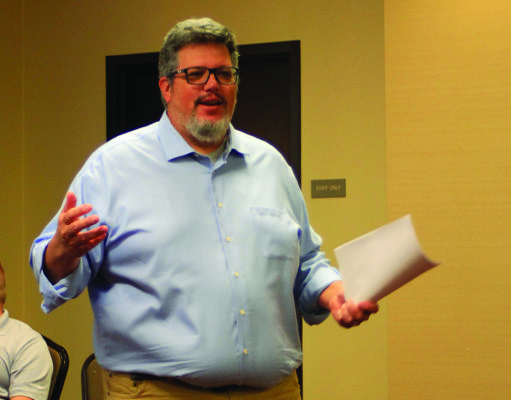October arrives this week. Fall means harvest and high school football among other things. This weekend is the second of two semi-annual highway cleanups I have been organizing for years. Traveling south on Highway 385 the two miles beginning just before the Western Sugar Ginn Receiving Station are ours. When I started helping out a little over two decades ago, our group had just adopted the stretch. Gradually, we removed what had been building up over time and now compare how the relatively-clean shoulders rate with recent spring and fall cleanups.
Gauging how much litter mars a community can be tricky. Telling whether progress is happening nationwide seems even more daunting. At the August Keep Nebraska Beautiful Conference, Jason Smith with Keep America Beautiful offered a comprehensive snapshot based on his organization’s 2020 National Litter Study (kab.org/litter-study).
The overall numbers from the 600 sites involved seemed discouraging until compared with 2009. In the 11 year interim there was a 54 percent reduction in visible litter. Smith, who represents affiliates in the western United States, said litter per mile is still an important indication. The 2020 numbers come out to 152 pieces of litter for each person in America. Shortening that finding to a hashtag, “#152 and You,” he said, “We found this is meaningful. A piece of litter I do pick up (is meaningful, it makes a difference). . . . 90 percent of U.S. residents believe litter is a problem in their state. Litter is significant and solvable.”
The study put the total litter estimate at 50 billion pieces, or 2,000 pieces per mile, along roadways and waterways, which accounted for just over half at 26 billion. Smith emphasized the study was built on foundational methodology (not a “one off”) and “will enable us to contribute to emergeant solutions.” Keep America Beautiful began science-based litter research in 1969.
Researchers carefully kept track of the types of litter as well as the number of pieces. Smith said there was more litter composed of plastic than any other material — 38.6 percent. Looking at individual categories cigarette butts still rate No. 1 though cellulose acetate filters are down 69 percent from the 2009 study.
Behavioral science shows the most effective way to address litter problems is based on the products themselves, Smith said. “The public doesn’t litter a ‘type’ they litter products. . . . Target the product — like pop — not cans or bottles.”
Personal protective equipment (PPE) entered communities on a large scale in 2020 and peopled littered it widely also, Smith said. There were 207 million pieces on the ground at the time of the study.
While Smith did not say when the next litter study may take place, he is confident that 700 affiliates across America are working to mobilize communities. For our part, Keep Alliance Beautiful encourages individuals, families and other groups to pick up litter on organized clean ups or just a piece here whenever you see it. Contact the KAB office at 308-762-1729 for information.

